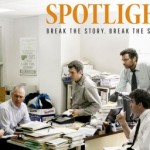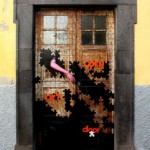Everyone knows the great energies running amok cast
terrible shadows, that each of the so-called
senseless acts has its thread looping
back through the world and into a human heart.
-Mary Oliver, in Shadows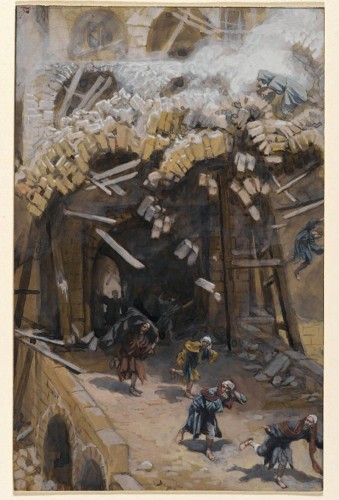
Jesus was teaching, as he always did, in the streets, teaching ordinary folks who had never seen the inside of a school to hope in a world they had not seen, a world not run by street bosses, price fixers, Herod with his huge building program, Caesar on a pedestal, the tyrants of this life. Then someone told him what Pilate had done. Pilate had killed people from Jesus’ home province, Galilee, who were at worship in the old Temple near the Tower of Siloam in Jerusalem, and in the disaster, their blood was mingled with the sacrifices on the altar.
The spinal shiver went through Jerusalem in a heartbeat. People knew the desecration was a warning. Strong, holy things had been violated: the altar in the high temple; the ritual practices held there; the sacred place reserved for priestly anointed hands; the animals, made holy by prayers, and making them holy in their offered lives; the murdered Galileans who had been standing at that altar. In a single stroke Pilate humiliated the nation and its culture, and the very presence of God.
Who’s the man?
Pilate, in this act of desecration,
says he is.
Jesus names the place: the Tower of Siloam. Eighteen men had been praying there, deliberately there, at the old temple built by King David in the old city, now somewhat removed from Romanized Jerusalem with its newly expanded temple, Herod’s work.* David’s temple, G.W. Buchanan suggests*, was built very near, perhaps only yards away from the circular Siloam Tower, which was its protection. The temple was next to the spring of Siloam. Buchanan notes the many biblical prophets who detail the stairs that went down to the spring from the temple, and the ruins of the footing of the Tower that have been found in our current century.
Pilate engineered the collapse of that Tower onto those worshipping Galileans, who were resistant to the new and improved temple. Or was it an act of God?
Who’s the man? I know that spinal shiver. Sikhs at their worship, near Milwaukee, WI. The Old Order Amish school children in their classroom in Lancaster County, PA. 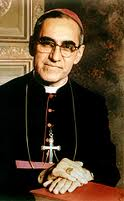 Archbishop Oscar Romero shot dead while saying mass at the chapel in La Divina Providencia Hospital in San Salvador.** Newtown. Aurora. Columbine. Rwanda. I cannot begin to name the desecrations that have happened in my own lifetime. In all these hours, the Joker has ruled. Lunacy looms larger than life itself. And where was God? Are these altars devoid of the powers they praise?
Archbishop Oscar Romero shot dead while saying mass at the chapel in La Divina Providencia Hospital in San Salvador.** Newtown. Aurora. Columbine. Rwanda. I cannot begin to name the desecrations that have happened in my own lifetime. In all these hours, the Joker has ruled. Lunacy looms larger than life itself. And where was God? Are these altars devoid of the powers they praise?
And then there are the natural disasters. Sandy. Katrina. The Japanese tsunami. Joplin, MO. The cataloguing does not end.
And the temptation to give up on God has pulled at my heart time after time. What is the point of the church, if the church insists only on serving itself? What is the value of the nation, if the flag is wrapped around corruption and torture? Where is the justice in a system that cannot set us free of these terrors? What is the point of our worship, if things do not change?
In Jerusalem then, and among us everywhere, the unending temptation is to disbelieve in the powers of truth, in justice or wisdom, or the hand of God at work or the love of God in this world.
Jesus knows this temptation is at work in us, and he presses for turning, turning, turning, away from the bleakness of despair. Turn, he urges, toward the warm altar of hope. No, life is not fair, but you can be fair. No, life is not beautiful, but you can be beautiful in your living. No, life is not faithful, but you can be faithful. The Man may be powerful in hate, but that does not make him God. And you can be powerful in love, which will step your feet into the kingdom of heaven, here and now.
Whether our lives and our deaths
were for peace and a new hope
or for nothing
we cannot say,
it is you who must say this.
We leave you our deaths.
Give them their meaning.
The words, from Archibald MacLeish’s poem, The Young Dead Soldiers, echo Jesus’ wisdom, as he urges them to choose the life of fruitful trees:
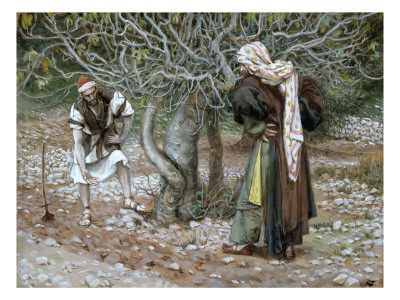 He turns the conversation to a tale about a fig tree, the icon of Israel. He is talking about them now, about their own lives. A man had a fig tree that bore no fruit. He complains to the gardener, Three years, and nothing! Cut it down! And the gardener pleads for the tree, saying, let me try one more year, I’ll dig around it and see if I can bring forth something.
He turns the conversation to a tale about a fig tree, the icon of Israel. He is talking about them now, about their own lives. A man had a fig tree that bore no fruit. He complains to the gardener, Three years, and nothing! Cut it down! And the gardener pleads for the tree, saying, let me try one more year, I’ll dig around it and see if I can bring forth something.
God, too, feels this temptation, this despair. And argues about that feeling with the gardener, who is a mingled image, part God and also plenty of us, who work to sustain life in so many ways, mothers, farmers, fishermen, teachers and priests, those who always work to see things in more than one way. We are all the gardener. As is God, who not only creates but also works at sustaining life in this world. God is the gardener, and the tree, the fruit and the bare waiting branches, the one with empty hands and the one who owns it all. And God is always arguing for a little extra time, for our sakes.
And here we are, not cut down. We have a little more time. Fruitfulness is ours to choose, an act of faith, an act of beauty, a work of justice, extending time into another season. And this is our choice, not how it makes us feel, but the meaning we choose to give it. It requires a turning, of the soul/the soil.
_________________________________________
*from an article by George Wesley Buchanan, Wesley Theological Seminary, in The Expository Times, 2003, published by Associates for Scriptural Knowledge.
**a newly-made Canadian video about Archbishop Romero can be seen at www.themartyrsproject.com and has much to say about the fruitfulness that has come from that terrible event.
Illustrations:
1. The Tower of Siloam, by Tissot, James Jacques Joseph, 1836-1902, Brooklyn Art Museum. from Art in the Christian Tradition, Vanderbilt Divinity School Library.
2. Archbishop Oscar Romero, wikipedia.
3. The Barren Fig Tree. by Tissot, James Jacques Joseph, 1876, illustration for The Life of Christ.


